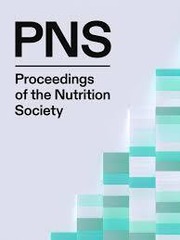Current dietary guidelines have focused on the reduction of dietary saturated fatty acid (SFA) intake as a means of reducing cardiovascular disease risk (CVD). Questions still remain as to whether monounsaturated (MUFA) or n-6 polyunsaturated (n-6 PUFA) fatty acids are the optimal macronutrient to replace dietary SFA. The aim of DIVAS (Dietary Intervention and VAscular function Study; ClinicalTrials.gov NCT01478958) was to determine the impact of substitution of dietary SFA with either MUFA or n-6 PUFA on plasma lipids and markers of insulin resistance in adults at an increased risk of developing CVD.
Men and women (n=195, mean (sd) age 44 (10) years and BMI 26.9 (4.0) kg/m2) participated in a 16-week, parallel, randomised, controlled, single-blinded intervention study. Volunteers were randomly assigned (minimised by gender, age, BMI and CVD risk score) to one of three isoenergetic diets: SFA-rich (target composition: 36% of total energy (%E) as total fat, 17%E SFA, 11%E MUFA, 4%E n-6 PUFA), MUFA-rich (36% E total fat, 9%E SFA, 19%E MUFA, 4%E n-6 PUFA), or n-6 PUFA-rich (36% E total fat, 9%E SFA, 13%E MUFA, 10%E n-6 PUFA). For the successful delivery of the dietary targets, a flexible dietary exchange model was developed in which exchangeable fats in the habitual diet were replaced by study foods (spreads, oils, snacks) with a specific fatty acid profile. Fasting blood total cholesterol (TC), high-density lipoprotein cholesterol (HDL-C), triacylglycerol (TAG), glucose, insulin and non-esterified fatty acids (NEFA) concentrations were measured at baseline and week 16. Low-density lipoprotein cholesterol (LDL-C) concentrations were estimated by using the Friedewald formula( Reference Friedewald, Levy and Fredrickson 1 ). Homeostasis model assessment (HOMA) was calculated as an index of insulin resistance( Reference Matthews, Hosker and Rudenski 2 ).
There was a significant effect of diet on fasting TC, LDL-C and TC:HDL-C ratio with significantly lower concentrations observed after the MUFA-and PUFA-diets compared with the SFA-rich diet. No differences were evident between the PUFA-rich and MUFA-rich diets. Dietary fatty acid intake did not significantly influence HOMA, blood glucose, insulin or NEFA levels (data not shown).

1Derived by Univariate Analysis for between diet comparison with baseline, BMI and age as covariates followed by the LSD post-hoc test; * significantly different from the SFA-rich diet (P<0.05).
In conclusion, replacement of dietary SFA for 16 weeks with either MUFA or n-6 PUFA resulted in a shift towards a beneficial lipid profile in men and women at increased CVD risk.
The DIVAS study was supported by the Department of Health and the UK Food Standards Agency (N02044).


